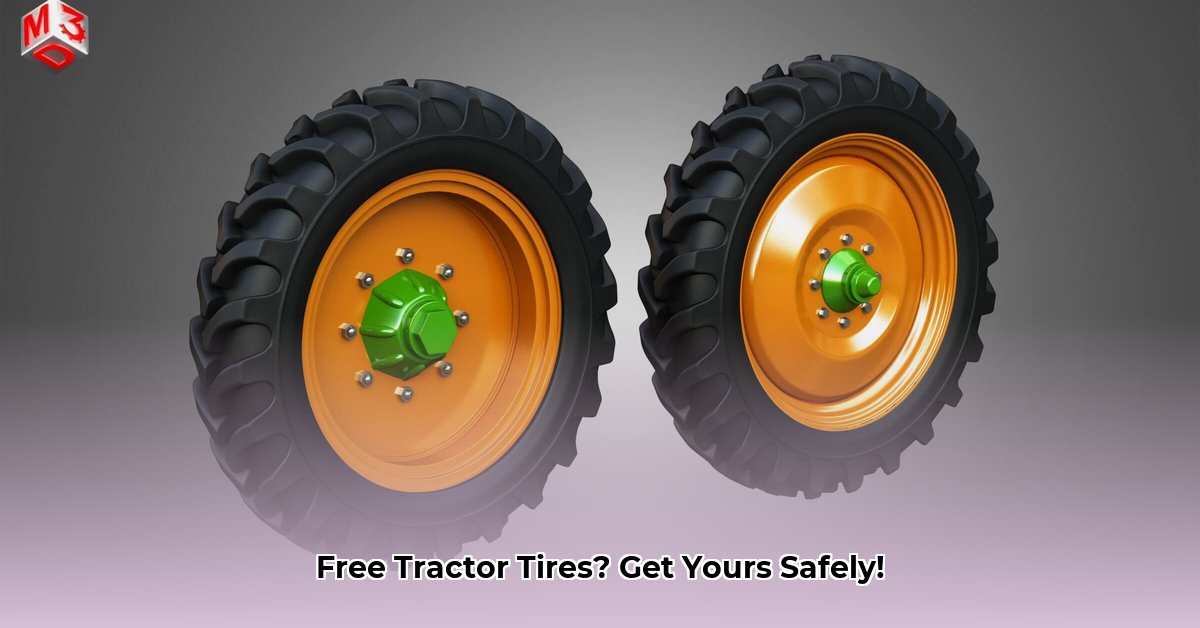
Getting free tractor tires might seem like a farmer's dream, but caution is crucial. While programs like Titan International's offer free tires to students restoring antique tractors—a fantastic initiative supporting agricultural education and sustainability—many free tires pose safety risks. This guide helps you navigate this complex landscape responsibly. For larger tractors, consider options like 28-inch tractor tires.
The Titan Tractor Tire Program: A Boon for Young Farmers
Titan International's program exemplifies sustainable agricultural education. They provide free tires to 4-H and FFA students restoring antique tractors, fostering valuable skills and cost savings. However, the program is competitive, and securing tires isn't guaranteed. Check the Titan website for application details and eligibility requirements.
Finding and Assessing Free Tractor Tires: A Safety-First Approach
Beyond Titan, free tires may appear in junkyards, online classifieds, and farm auctions. However, "free" doesn't equate to "safe." Thorough inspection is paramount before using any used tire.
Step-by-Step Tire Inspection:
- Visual Inspection: Examine the tire for cracks, cuts, bulges, or embedded objects. Pay close attention to the sidewalls.
- Rubber Feel: Check for hardness, brittleness, or unusual softness, indicating age and potential weakness.
- Bead Inspection: Ensure the bead (the reinforced edge) is intact and firmly attached. Separation is a major red flag.
- Age Assessment: Locate the manufacturing date (often on the sidewall) to determine the tire's age and remaining usable life.
- Application Suitability: A tire suitable for a static display is unsuitable for a working tractor. Never use a damaged tire on a vehicle.
Responsible Tire Handling and Storage: Prioritizing Safety
Tractor tires are heavy. Always use appropriate lifting equipment (tire changer, jack) to avoid injury. Store tires in a cool, dry place, away from direct sunlight and extreme temperatures. Proper storage extends tire life.
Safe Disposal and Environmental Considerations: Sustainable Practices
Never dump unusable tires. Improper disposal harms the environment. Contact your local waste management facility for proper disposal methods and recycling options. Many communities offer tire recycling programs.
Alternatives to Free Tires: Balancing Cost and Safety
While free tires are tempting, certified used tires from reputable dealers offer a safer, more reliable option, especially for road-use tractors. New tires, though expensive upfront, provide superior performance and longevity—often making them more cost-effective in the long run.
Weighing the Pros and Cons: A Realistic Assessment
Free tires offer low initial cost but can incur high repair/replacement and disposal costs. Availability is high, but quality varies. They promote resource reuse (if handled responsibly) but can harm the environment if disposed of improperly. Suitability depends heavily on the tire's condition, and safety risks are significant, especially for vehicle use. Always prioritize safety.
How to Responsibly Source and Dispose of Tires in Sustainable Agriculture
Key Takeaways:
- Free tractor tires can save money, but careful sourcing and responsible disposal are crucial for sustainable agriculture.
- Thorough inspection is essential before using any used tire. Safety is paramount.
- Understand local regulations and recycling options for environmentally sound disposal.
- Consider alternatives like certified used tires to reduce environmental impact and support responsible businesses.
- Proper tire management minimizes environmental damage and promotes sustainable farming.
Finding Free Tires: Exercise extreme caution. Online classifieds, farm auctions, and scrap yards are potential sources but demand thorough inspection before use.
Inspecting Used Tires: Check for cracks, sidewall damage, worn treads, punctures, bulges, embedded objects, and determine tire age. Discard tires with significant damage.
Using Free Tires Responsibly: Suitable non-vehicular uses include makeshift barriers, simple structures (with proper support), or water features (considering potential leaching). Never use damaged tires on vehicles.
Responsible Disposal: Check local regulations, explore recycling options, consider repurposing, and avoid illegal dumping. Environmental responsibility is critical.
Alternatives to Free Tires: Certified used tires and new tires provide safer and more reliable alternatives.